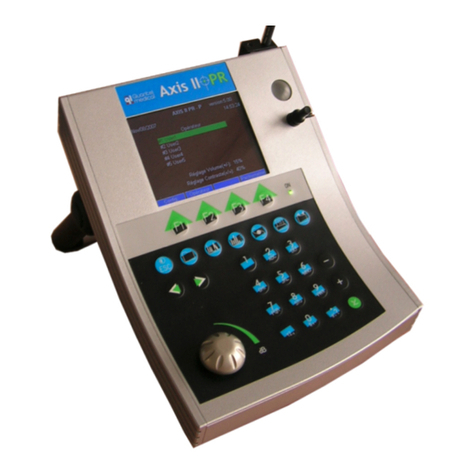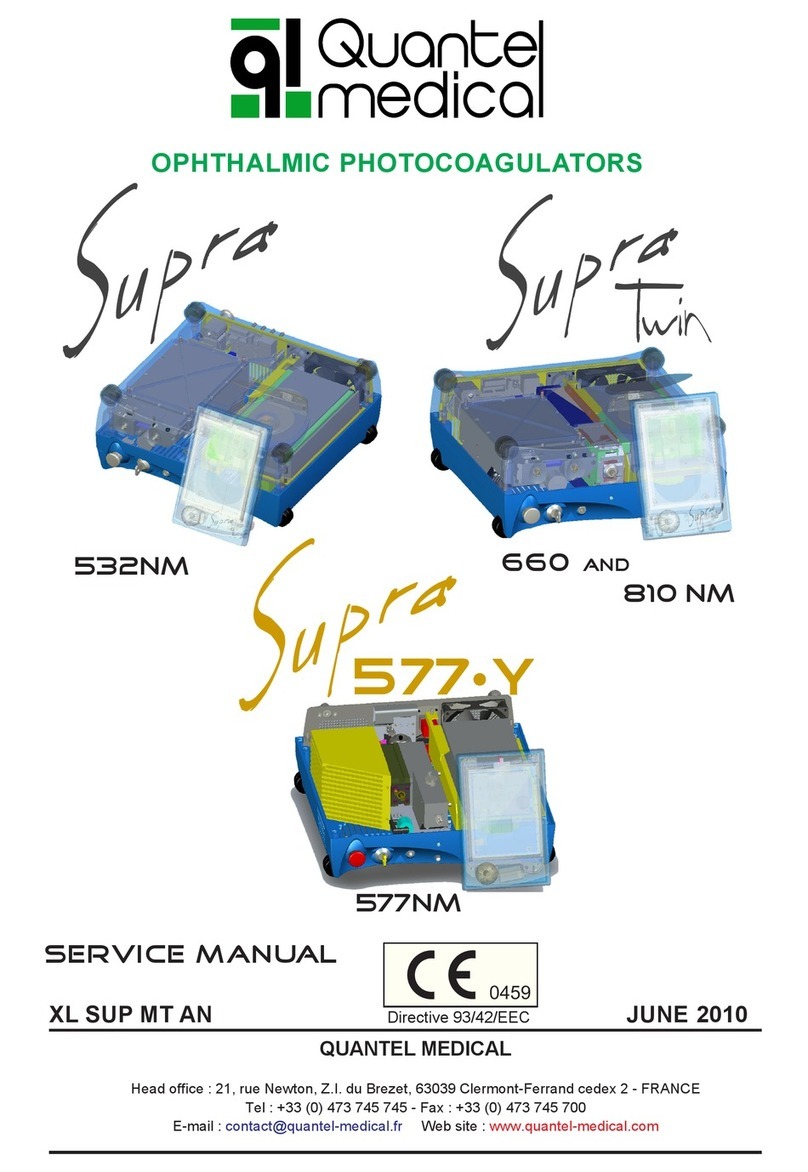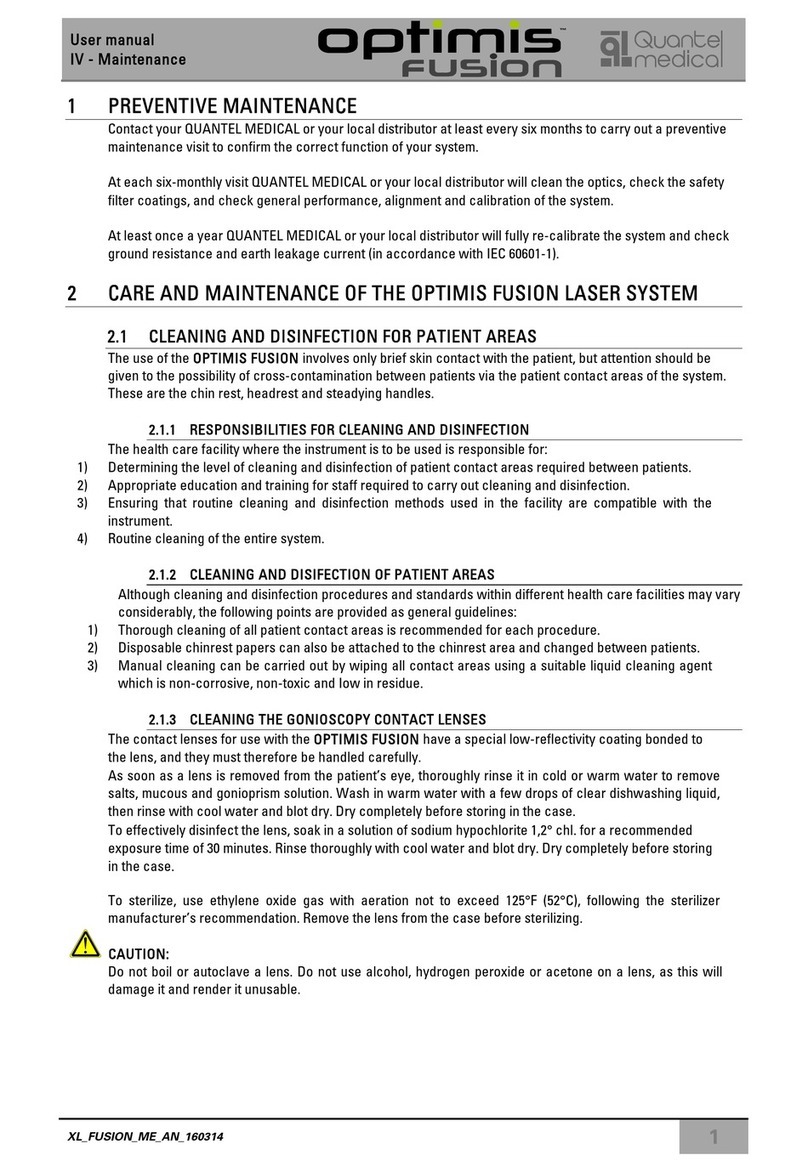
6Rev 04-2009
SERVICE MANUAL
2- TECHNICAL SPECIFICATIONS
2-2 ELECTRICAL REQUIREMENTS
Power supply: 100 to 240 V~ ±10% single-phased
Frequency: 50 / 60 Hz
Note: “~” symbol means alternating current.
Maximum power consumption: 100 VA maximum.
2-1 CLASSIFICATION
The system is intended for continuous operation and has the following
classification:
- Electric security class: EN 60 601-1 Standard
- Protective class: I
- Type: B
2-3 COMPLIANCE
- Power supply and enclosure designed per: IEC 60 601-1
- European Directive: 93/42/CEE
- Electromagnetic compatibility: IEC 60 601-1-2
2-4 DIMENSIONS
Global size: Width: 17 cm (6.69 in)
Depth: 18,8 cm (7.40 in)
Height: 19 cm (7.48 in)
User interface touch screen: 8,6 x 11,5 cm (3.39 x 4.53 in)
2-5 ENVIRONMENTAL CONDITIONS
The temperature of the room where the device is operated must be within the
following range:
10 °C < T° < 35 °C (50°F < T° < 95°F)
The relative humidity must not exceed 95% without condensation.
The Device storage and transport temperature must be within the range:
-20 °C < T° < 70 °C (- 4°F < T° < 158°F)
































